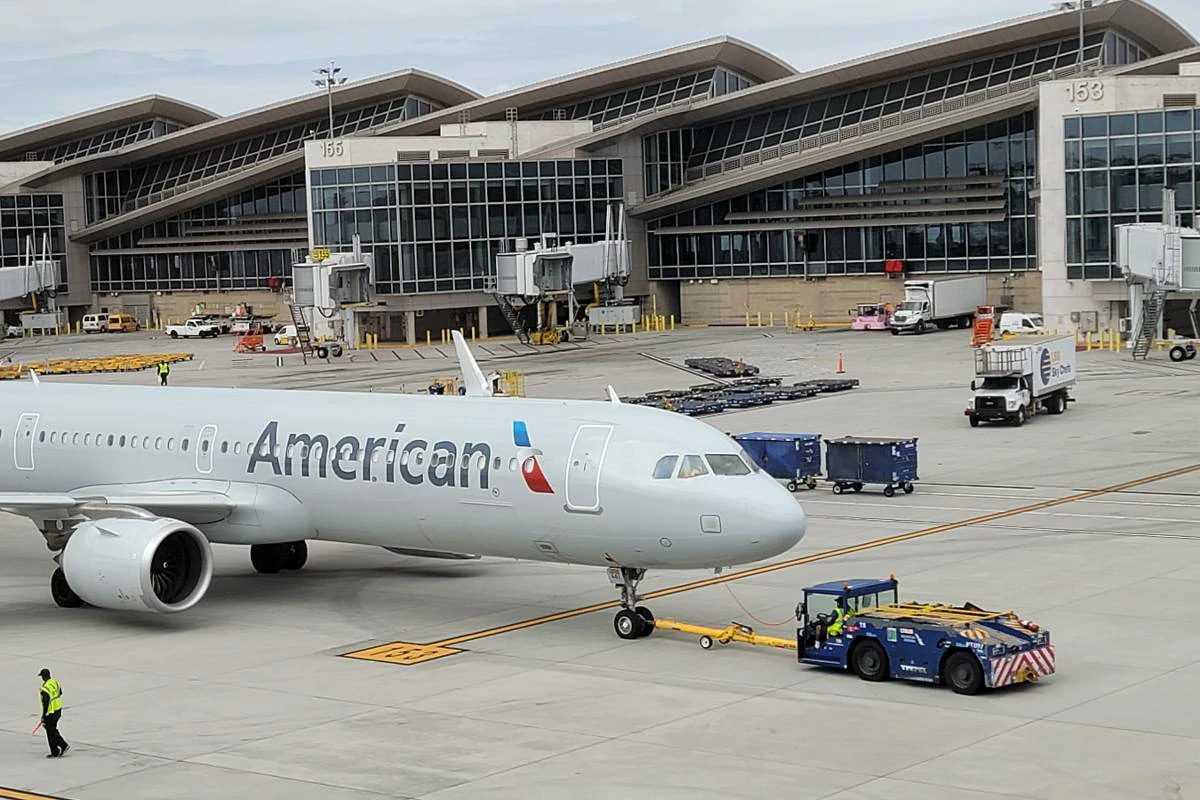When does a landlord have to pay for a hotel room for a tenant California? Answer is – In California, landlords are legally obligated to provide habitable living spaces for their tenants. If a rental unit becomes uninhabitable due to issues beyond the tenant’s control, the landlord may be responsible for covering the cost of temporary accommodations like a hotel room. This includes situations like:
- Natural disasters: Fires, floods, earthquakes, etc., that render the unit uninhabitable.
- Major repairs: Extensive plumbing problems, electrical failures, or structural damage that requires the tenant to vacate.
- Health hazards: Severe mold infestations, pest infestations, or gas leaks.
Summary
- California law mandates that landlords provide habitable dwelling spaces for tenants.
- Landlords may need to pay for a tenant’s hotel room if the rental unit becomes uninhabitable.
- Reasons for a unit becoming uninhabitable include natural disasters, essential repairs, and health hazards.
- Tenants have rights in these situations and should understand their options.
When does a landlord have to pay for a hotel room for a tenant California?

California tenants possess specific rights designed to guarantee safe and livable housing. Two core concepts underpin these rights:
The importance of habitable housing under California law
California Civil Code Section 1941 obligates landlords to maintain rental properties in a habitable condition. This goes beyond basic upkeep. A habitable dwelling must meet specific standards that ensure the health and safety of the occupants. These standards include:
Structural soundness: Roofs, walls, and floors must be free from significant damage that might compromise safety.
Weatherproofing: Protection from rain, wind, and other elements is essential.
Working utilities: This includes functional plumbing, heating, electrical systems, and gas lines where applicable.
Sanitary conditions: The unit must be free from mold, pest infestations, and other health hazards.
Reasonable levels of cleanliness: Landlords are responsible for ensuring the unit is reasonably clean at the start of a tenancy.
The implied warranty of habitability
This legal principle is embedded in California law, even if not explicitly written into a lease agreement. It means that every residential rental unit comes with a guarantee that it is fit for human habitation. This warranty cannot be waived by the tenant, placing the responsibility squarely on the landlord.
Why does this matter to California renters?
The concepts of habitable housing and the implied warranty of habitability provide a legal framework for tenants when living conditions fall below acceptable standards.
If a landlord is unwilling or unable to correct a serious issue that negatively impacts health or safety, tenants have options and can seek remedies through legal channels.
Sarah James Expert Opinion
“California’s habitability laws are some of the strongest in the nation, demonstrating a commitment to protecting tenant rights,” says Sarah James, Housing Attorney. “Understanding these laws is crucial for both landlords to provide compliant housing and for tenants to advocate for themselves when their housing needs are not being met.”
Resources
- California Department of Consumer Affairs: California Tenant’s Rights Guide
- California Civil Code Section 1941
When Does a Landlord Have to Pay for a Tenant’s Hotel Room?

While not an everyday occurrence, there are circumstances in which a California landlord becomes legally obligated to provide temporary housing for a tenant.
The most common of these situations involve the rental unit becoming uninhabitable due to factors outside the tenant’s control. This brings us to the scenarios of natural disasters and unforeseen events.
1. Natural Disasters and Unforeseen Events
California, unfortunately, experiences its share of natural disasters that can leave rental properties severely damaged or destroyed.
Fires: Wildfires, especially prevalent in certain regions, can quickly render a home uninhabitable due to fire damage, smoke damage, or safety concerns posed by compromised structures.
Floods: Heavy rains, mudslides, or burst pipes can lead to flooding that damages the interior of the dwelling, destroys belongings, and may even create unsanitary mold conditions.
Earthquakes: Structural damage from an earthquake can make a rental immediately unsafe to occupy, necessitating significant repairs before a tenant can return.
Damage beyond the tenant’s control
The key factor in these situations is that the tenant bears no responsibility for the event that caused the damage. If tenant negligence led to a fire, for example, the landlord would not likely be liable for hotel costs.
However, when disasters strike or unforeseen problems cause significant inhabitability, the landlord’s duty to provide a habitable dwelling extends to offering temporary relocation assistance.
Jennifer Smith Expert Opinion
“Natural disasters can be traumatic for tenants, on top of the disruption to their housing,” states Jennifer Smith, property manager. “Open communication between landlords and tenants during these crises is vital to finding workable solutions quickly.”
Resources
- Federal Emergency Management Agency (FEMA): Find disaster assistance resources
- California Department of Insurance: Disaster preparedness guides
2. Essential Repairs and Maintenance
Even in well-maintained properties, major systems can fail, requiring work that renders the unit unsafe or unusable for a period. Examples include:
Plumbing failures: Extensive leaks, burst pipes, or a sewer backup can lead to water damage, lack of running water, and unsanitary conditions requiring a tenant to vacate during repairs.
Electrical malfunctions: Serious electrical issues, particularly those posing fire risks, may require the power to be shut off or major workarounds that make staying in the unit impractical.
Structural issues: If foundational damage, substantial roof leaks, or compromised load-bearing structures are discovered, immediate repairs could put the tenant’s safety at risk.
3. Health and Safety Hazards
Landlords have a duty to protect tenants from health hazards within the rental property. Some situations that may warrant temporary relocation include:
Mold infestations: Severe mold growth, especially if caused by underlying structural problems or leaks, can pose respiratory health risks. Remediation may require the tenant to leave.
Pest infestations: Certain infestations (bedbugs, roaches, termites) may require fumigation or extensive treatment methods incompatible with the tenants remaining in the unit.
Gas leaks: Suspected gas leaks are taken seriously due to fire and explosion danger. Tenants may need to evacuate until the source is located, the gas safely shut off, and repairs are completed.
Dr. Robert Davies Expert Opinion
“Health and safety concerns should never be ignored by tenants or landlords,” emphasizes Dr. Robert Davies, Environmental Health Specialist. “Mold, in particular, can lead to long-term health problems, so prompt testing and remediation, including temporary relocation if necessary, are crucial.”
Resources
Tenant Rights and Responsibilities

California tenants facing serious habitability issues have legal protections. However, to exercise those rights effectively, they need to follow certain steps and understand their options.
1. Documenting the Issue
Strong documentation is the foundation of a tenant’s case if the landlord fails to act in a timely or appropriate manner.
Taking photos and videos: Thoroughly document the condition of the rental unit, focusing on the specific issue (water damage, mold growth, structural problems, etc.). Note dates and times if possible.
Keeping records of communication with the landlord: Save emails, texts, letters, and notes from phone calls. Detail the date, time, and the key points of your conversations regarding the problem.
2. Reporting to Authorities
If a landlord is unresponsive or the issue poses a severe health or safety risk, tenants shouldn’t hesitate to contact the relevant authorities.
Contacting local housing departments or code enforcement: Most cities and counties have agencies responsible for enforcing housing codes and rental regulations. Explain your situation and inquire about the inspection process and other assistance they might offer tenants.
Health and Safety Hazards Involve your local health department for severe mold concerns or pest infestations that might violate public health codes.
3. Understanding Relocation Rights
When a unit is deemed uninhabitable, tenants have several options depending on the severity of the problem and the landlord’s proposed solutions.
Temporary housing options: As discussed, the landlord may be responsible for covering the cost of a hotel stay if repairs necessitate the tenant to vacate the premises.
Rent adjustments or potential termination of the lease: California law allows tenants to withhold rent or break their lease under certain conditions if a landlord fails to address serious habitability issues. However, obtaining legal counsel before taking this step is strongly advised.
Emily Davis Expert Opinion
“Tenants should never feel trapped in an uninhabitable unit. But it’s crucial to follow the correct procedures,” advises Emily Davis, Attorney specializing in landlord-tenant law. “Consulting with an attorney can help tenants understand their full range of rights and the best course of action for their unique situation.”
Resources
- Legal Aid Foundation of Los Angeles – Provides legal assistance to low-income residents.
- Tenants Together: California Tenant Rights Organization
What Does “Uninhabitable” Mean?

Unfortunately, there’s no single checklist in California law that definitively labels a dwelling uninhabitable. It’s a judgment call based on the totality of the circumstances and the factors outlined in the implied warranty of habitability. However, some key categories of issues often contribute to a unit being deemed uninhabitable:
1. Conditions that pose a significant risk to health and safety
Severe Mold: Extensive mold growth, particularly toxin-producing “black mold,” can trigger respiratory problems, allergic reactions, and worsen existing conditions like asthma.
Pest Infestations: Certain infestations (e.g., cockroaches, bed bugs, termites) can be very difficult to eradicate, pose disease risks, and have a psychological impact on occupants.
Lead Paint Hazards: Older properties with lead paint that is peeling or deteriorating can pose dangers, especially to young children.
Unsafe Structures: Significant structural damage to load-bearing elements, roofs, staircases, or balconies presents a direct risk of collapse and injury.
Environmental Hazards: Exposure to asbestos, chemical contamination, or proximity to hazardous waste sites might render a unit uninhabitable.
2. Lack of essential services (water, heat, electricity)
No Running Water or Hot Water: Access to clean running water for sanitation and hygiene is fundamental. Extended hot water outages can also impact habitability.
Lack of Heat: During colder months, landlords must provide a means to heat the unit to a reasonable temperature.
Major Electrical Issues: Faulty wiring, constant outages, and exposed electrical components pose fire and shock dangers.
3. Severe structural damage
Significant Roof Leaks: Leaks that cause interior water damage, mold problems, or compromise the ceiling’s stability can become an inhabitability issue.
Foundation Problems: Cracking, shifting, or sinking foundations call for expert assessment and may necessitate evacuation for repairs.
Building Code Violations: If local authorities flag a unit for serious code violations that the landlord fails to address in a timely manner, it could lead to the unit being declared uninhabitable.
Robert Sanchez Expert Opinion
“Uninhabitability is situational. A minor water leak is different from a potential gas leak,” clarifies Robert Sanchez, Certified Home Inspector. “What matters is a substantial, ongoing threat to the tenant’s well-being that the landlord isn’t correcting.”
Other Considerations

Beyond the core concepts of habitability and tenant rights, insurance policies, and alternative dispute resolution methods can significantly impact the outcome for both the tenant and the landlord.
1. Landlord’s Insurance
Potential coverage for temporary housing costs: Many landlord insurance policies contain clauses that may cover tenant relocation expenses if the cause of the displacement is a covered event (like a fire or a burst pipe). However, claims processes and policy limits can vary.
Not a guarantee: Tenants should never assume that the landlord’s insurance will automatically take care of their needs. It’s crucial that you take steps to protect your own interests.
Communication is key: Landlords should promptly contact their insurer, while tenants should stay informed about the claim’s progress and how it might affect them.
2. Tenant’s Insurance
Protection for personal belongings and displacement expenses: Good renter’s insurance policies are invaluable in these situations. They often cover damage or loss of personal belongings due to covered events affecting the rental unit.
Additional Living Expenses (ALE): ALE coverage can be a lifesaver, reimbursing the tenant for costs like hotel stays, meals, and other necessities if they are temporarily displaced.
Checking your policy: Tenants should review their renter’s insurance policy carefully well before any problems arise. Make sure you understand your coverage limits and any necessary steps to file a claim.
Lisa Miller Expert Opinion
“Tenants often underestimate the value of renter’s insurance,” says Lisa Miller, Insurance Broker. “It’s the only policy that’s truly on your side. Consider it an essential part of protecting your home, even if you don’t own the building.”
3. Negotiation and Mediation
The Benefit of Open Communication: Before resorting to legal action, trying to work with the landlord in good faith to find a mutually acceptable solution can often save time, money, and stress.
Putting Things in Writing: Document all proposed agreements, including temporary housing options, timeframe estimates for repairs, and any adjustments to rent.
Mediation Services: Many local governments or tenant advocacy groups offer mediation services. A neutral third party can help landlords and tenants resolve disputes without going to court.
Conclusion
While the situation of an uninhabitable rental unit and the need for temporary relocation is hopefully rare for tenants, understanding the basics of California’s habitability laws provides a crucial layer of protection. Key points to remember:
- Landlords have a legal obligation: They must provide a habitable dwelling that meets fundamental standards of safety, sanitation, and functionality.
- Tenants have rights: Don’t continue living in dangerous or unhealthy conditions. Document the issue, report it to the landlord and relevant authorities, and understand your options regarding relocation and potential rent adjustments.
- Insurance matters: Both renter’s insurance and a landlord’s policy can be instrumental in covering relocation expenses or damages.
- Communication and mediation: Before legal action becomes necessary, explore every avenue of good-faith communication and seek mediation resources if needed.
FAQs
Q: My apartment is always too cold in the winter. Can I force my landlord to pay for a hotel?
Unfortunately, discomfort alone is unlikely to make a landlord legally responsible for relocation costs. However, lack of adequate heating is a potential habitability violation. Document the issue (thermometer readings, communication with the landlord) and explore options through your local housing authorities.
Q: A water leak is causing mold in my bathroom. The landlord is slow to fix it. What can I do?
Mold poses potential health risks, so take it seriously. Thoroughly document the issue. Contact your local housing department or health department and consider consulting a tenant’s rights attorney if the landlord remains unresponsive.
Q: Does the landlord have to put me up in a comparable place if I have to relocate?
There’s no legal requirement for a like-for-like replacement. The focus is on providing safe, temporary housing. The landlord might offer a vacant unit in the same complex, a hotel room, or even assist in finding an alternative short-term rental.
Q: Can I immediately break my lease if my apartment becomes uninhabitable?
It’s best to seek legal advice before breaking a lease. “Constructive eviction” is a complex legal process. You need to prove you’ve exhausted reasonable avenues to get the landlord to address the issue before taking this step.







